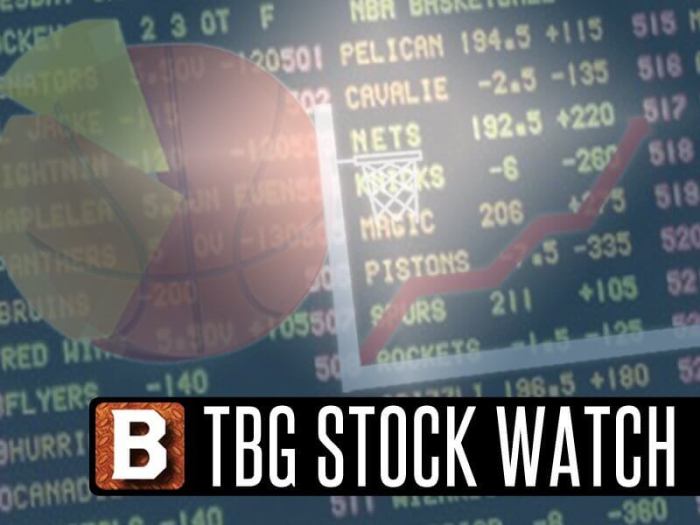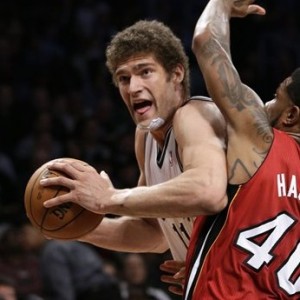There’s been a lot of positive press about Chris Douglas-Roberts and his strong start this season where he’s averaging 16.7 points and 4.7 rebounds on 46 percent shooting. Dime Magazine even went as far as to call CDR the Atlantic Division’s most improved player for the first quarter of the season, and it’s hard to argue with that logic considering how Douglas-Roberts wasn’t even a part of the Nets’ rotation last year until the very end.
But lost in the positives are a couple of alarming statistical indicators that appear to demonstrate how Douglas-Roberts has also regressed in a couple of key areas from his rookie season. Let’s just say this – I’m going to stop short of calling CDR a ball hog, but if he’s ever going to reach that next level in the NBA, he would be wise to do more with the ball than just shoot it for the next three-quarters of the season.
Let’s take a look at his assist ratio. A player’s assist ratio is determined by the percentage of a player’s possessions that end in an assist. In CDR’s case, that number has been reduced nearly in half compared to his rookie season, from 18.2 last year to 9.3 this year, according to ESPN’s John Hollinger. Meanwhile, his usage rate, the number of possessions a player uses per 40 minutes, has increased less dramatically from 17.5 last year to 20.8 this year. To top it all off, his turnover ratio, the percentage of a player’s possessions that ends in a turnover is up: 10.8 last year to 11.5 this year.
So let’s make this simpler: what these numbers suggest is that while Douglas-Roberts is only getting the ball about 3 more possessions per 40 minutes more this year, his ability to convert an assist has been cut in half, all while turning over the ball at a higher rate (and a high rate mind you – that TO ratio ranks him 38th among all SFs in the NBA). That’s not a great combination, and it plays a large part in explaining why despite the higher scoring output, CDR’s Player Efficiency Rating is right around 15 – the barometer for NBA average.
Let me attempt to cut some arguments off at the pass. Yes, the Nets are having just an awful shooting year, so that will surely cut down the number of assists CDR can convert. Also, with the myriad of injuries the Nets experienced early-on, Douglas-Roberts has been asked to become more of a scorer. These two factors will clearly affect CDR’s assist ratio. I don’t think I’m going out on a limb saying that these factors should not impact his game to the point of cutting his assist metrics in half. And what about the still too-high turnover rate?
If you’re still not convinced, also consider how Douglas-Roberts is setting up his teammates.
As Sebastian noted in his fantastic zone defense post on Tuesday, CDR has a habit of holding the ball too long as he decides what he’s going to do in a given possession. As a result, sometimes when Douglas-Roberts passes off the ball, the shot clock is close to expiring and his passes go to someone forced into a poor shot.
In the first example, CDR gets the ball, but reacts too slowly and misses an open Brook Lopez in the post. By the time CDR gets the offense going, the Knicks are fully set in their zone and Trenton Hassell is the guy taking the shot as the clock is winding down – not a good choice there.
In this other instance, Sebastian shows how CDR holds the ball in the corner for a good two seconds before making any kind of decision. This is just far too long for the ball to be literally motionless against an NBA defense.
Also keep in mind that you can be a score first option on your team and still be an efficient passer. In his last three seasons with the Nets, Vince Carter – certainly a scorer more than anything else – had an assist ratio of 16.0, 19.0 and 18.2.
To end things on a happier note – there are some positive signs that demonstrate that CDR’s scoring output isn’t going up solely because he’s chucking up more shots. According to Hoop Data, CDR’s jump shooting has improved greatly from last year, especially on shots outside of 10 feet. On 10-15 foot jumpers, CDR is shooting 42 percent this year, up from 29 percent last year. From 16-23 feet, he’s shooting 42 percent, up from 36 percent last year. This is obviously a great sign. But to bring it back to a negative – of all the league’s small forwards who have played at least 17 games, only 34.6 percent of CDR’s makes from 16-23 feet are off assists, which places him near the bottom quarter for his position. In other words, when CDR is making his long twos, it’s generally happening after his dribbled the ball for a bit, thus negating the assist.





















